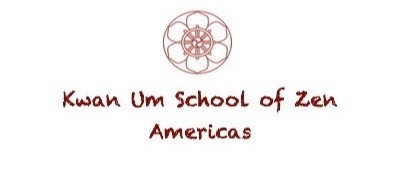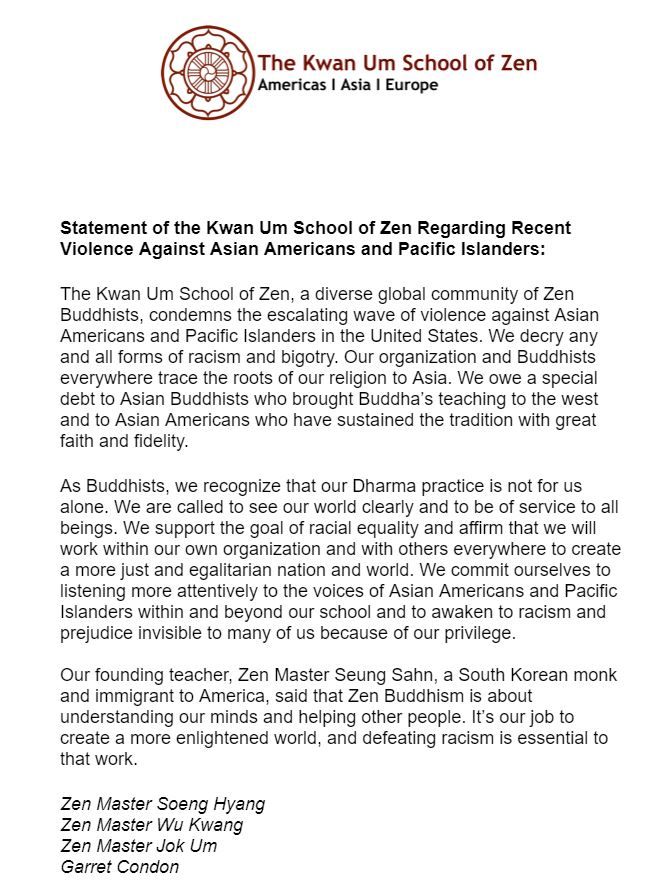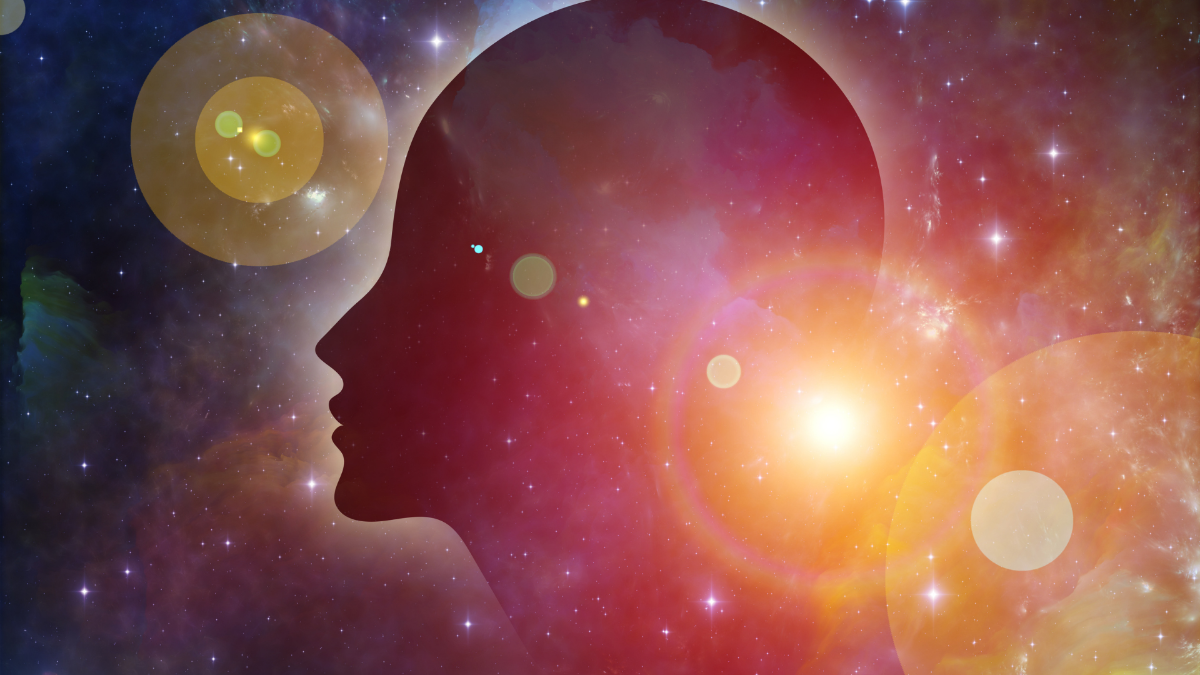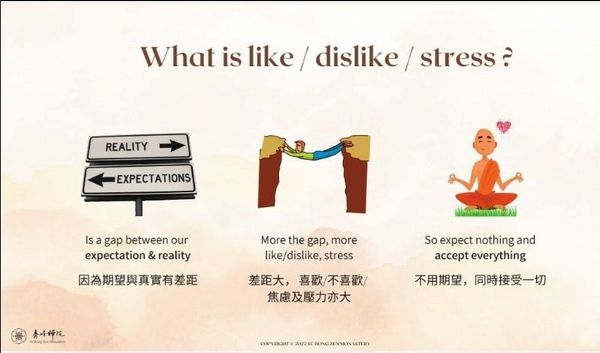-
0:00/5:32
-
0:00/7:20
“Dear Friends, Delaware Valley Zen Center holds in person practice at the New Ark United Church of Christ, 300 E Main St, Newark, DE 19711. Practice night is Wednesdays at 6:30pm. We conduct hybrid practice the 3rd Wednesday of each month, with in-person practice and online Kong-an interviews on that night. On the 4th Wednesday of the month Zen Meditation instruction is offered at 5:30 PM, pre-registration in not required, if you have questions about instructions, send questions to DVZC@DVZC.com If you wish to be added to the practice schedule email list, send an email to DVZC@DVZC.com and request to be added to the weekly practice update list.”
For Newcomers
Everyone is welcome to practice with us.
There is no need to let us know in advance before attending regular practice. If you do, we’ll be sure to expect and welcome you. Comfortable clothing is recommended, as many of us sit on cushions on the floor. This is not required – other members prefer to sit in chairs.
There is nothing special to know before attending. You do not need to have practiced zen or even meditated before. We can give some simple instructions before practice if anyone needs them.
For a more in depth INTRODUCTION, Zen Meditation instruction is offered the 4th Wednesday of the month beginning at 5:30 PM
There is no charge for joining our regular meditation practice. We have a donation link where you may leave an anonymous donation.
We look forward to meeting you and hope we can be helpful in some way.
Zen and Kwan Um School Teaching

DREAMING…
Many people get some things and don't get other things. But getting and not getting are the same. If they don't get something, they suffer; if they do get something, it will eventually disappear so they will suffer.
For example, suppose you had a dream last night and you are very attached to that dream, carrying it with you all through the day. When you were dreaming, you did not think the dream was good or bad —you were just dreaming. But later, if you like the dream, you want to carry it with you and if you don't like the dream, you want to forget it. But a dream is a dream. If you want to hold on to it or push it away, you have a problem; this is the appearance of likes and dislikes. Many people don't understand that likes and dislikes are also a dream. A sleeping dream and everyday thinking are both dreams; they do not exist. If you understand this nonexistence, then you will understand that keeping is not necessary, and pushing away is not necessary. Put it all down! —Zen Master Seung Sahn

Our thoughts and our feelings — they're not ours. The phrase “thoughts in our head” — that’s a very interesting notion. What does that mean? Where do thoughts live? If you dissect your brain, you won't see a thought. Think about it… they just arise. And, if we let them, they just evaporate. Our emotions are the same way. In Chinese the word is heart/mind. Mind/heart is not like mind here and heart there. Emotions and thoughts are similar sorts of object: they arise and then they kind of, poof, evaporate. So yeah, we're not our thoughts. Our thoughts just come and they go, and they change over a lifetime. You probably don't think the same thing you did when you were three years old... So yeah, thoughts change over a lifetime. And our true nature is something that's shining and free. Also, our true nature is not just ours. Our true nature is this universal nature, this Buddha nature. We're just a vessel for it.
We are not our thoughts. Our thoughts are just ephemeral. When we hold our thoughts, that's when we get war. War is when people's thoughts freeze. And they see the other as the enemy instead of as their brothers and sisters. So, we are not our thoughts. We have to keep a mind that is vast and wide, as vast and wide as this universe. That’s really important.
- Zen Master Bon Hae (Judy Roitman) from a dharma talk in 2023
|
|
|



In one of the Buddhist scriptures, the Hua Yen Sutra (in English, the Flower Garland Sutra), there is a short passage that is often quoted: “If you want to understand all the Buddhas of the past, present and future, then you should view the nature of the universe as created by mind alone.” “Created by mind alone” is not a philosophical point about whether everything is inside or outside or whether outside even exists. The point is that we experience everything in our minds, nowhere else. Our feelings are registered in our minds; sounds are registered in our minds. If there were no consciousness, ears wouldn’t be functioning, eyes would not be functioning and so on. Everything occurs in our minds and unfortunately most of the time we are coloring reality with our own mental constructions, imagination and fabrication. We make things. And when we’re making things we are very far away from reality as it is. … All this has to do with the activity of ignorance. Ignorance is not so much a thing as an active ongoing process of ignoring things as they are and generating my own version of them.
—Zen Master Wu Kwang
Put It All Down

Every enlightenment story is about putting it all down and waking up to our original nature. Here in Singapore it’s cloudy this afternoon, but I know if it clears up the sun will be shining brightly. That’s my experience, and that’s your experience too. Very simple! When the clouds lift the sun shines. It’s the same for the mind.
One day a Brahmin came to the Buddha to make an offering of flowers. He had a flower in each hand. The Buddha said, “Put it down.” The man placed the flower in his left hand in front of the Buddha.
The Buddha said, “Put it down.” The man then laid the flower in his right hand down.
Again the Buddha said, “Put it down.”
“I’ve put down the flowers, what else is there to put down?”
The Buddha said, “I’m not referring to your flowers. You should put down the six roots, the six dusts and the six consciousnesses, then you will be free from life and death.”
“Put it all down” means to let go of your opinion, your condition and your situation. If you don’t attach to any idea about yourself or the world then you are free. Your mind becomes like space. Then you can see, hear, smell, taste, touch and think clearly. The sky is blue; the trees are green.
In the Zen school this teaching comes down to us through the Diamond Sutra. The founder of the modern Zen style of teaching was Hui Neng, the Sixth Patriarch. He died in 713 CE. He’s famous for getting enlightenment after hearing just one sentence from the Diamond Sutra: “When thinking arises in your mind, don’t attach to it.” This is the easiest way to understand “put it all down” and nonattachment. It means letting go of your thinking.
Here’s a famous story from Tang Dynasty China. Tan Shan and a novice monk were traveling around together when one day they encountered a beautiful woman in very fine clothes standing beside a swollen and muddy creek. She was stuck! Han Shan offered to carry her across, for which she was grateful. He set her down on the other side of the creek and the monks continued on their way. Later in the evening Han Shan and the monk stopped at an inn to rest. But the young monk was very agitated. Finally, he blurted out, “We are monks! How could you pick up a woman like that?”
Han Shan replied, “I already put the woman down, but you are still carrying her.”
Our founding teacher, Zen Master Seung Sahn, wrote many letters over the years responding to student’s questions about Zen. He would always end his letters by saying, “I hope you only go straight, ‘don’t know,’ which is clear like space, soon get enlightenment and save all beings from suffering.” This teaching style has three parts: The first part is “put it all down.” “Don’t know” is another term for our original mind, the mind that is not attached to anything. It is clear like space. The second part means that when you put it all down, you naturally wake up from your attachment dream. We call that enlightenment. And the last part refers to Buddha’s getting up from under the Bodhi Tree and helping all beings get out of suffering. That is the original job of someone who has put it all down. Love and compassion is the job of our original nature.
Here is a kong-an for you:
A monk asked Joju, “I’m not carrying anything, how should I practice?”
Joju said, “Put it all down.”
The monk said, “But I’m not carrying anything. What is there to put down?”
Joju replied, “Then carry it along!”
So, what did Joju mean when he said, “Then carry it along”?


|
|
|

|
|
|
|
|
|



|
|
|
|
|
|

Believe in Yourself 100 Percent

|
|
|
|
|
|


|
|
|

Someone once asked Jesus, “When will the final rest for the dead take place, and when will the new world come?” People wanted to know that from the Buddha, too. They would ask, “What is Buddha? What is dharma? Show me the way!” We all think, this life is not so great, so when is it going to get better? Jesus answered, “What you look for has already come, but you do not know it.” The Buddha said it's like a fish swimming in water and saying, “I'm thirsty.”
Sometimes it's easier for someone else to see your Buddha-nature than it is for you. But the work begins with each of us. It's in our center. We have to find our guts, our ability to be in balance with those five things: food, sex, sleep, fame, wealth. Dying without ever really knowing who we are can seem easier than finding out what we're responsible for in this life.
Each of us has the ability to open to "what am I?," whatever the situation. There are tremendous opportunities to learn, to get out of the safe zone and into the regions that are more difficult. What's important is to be uncontrived, not to have an idea, but to open up each moment to what's going on right now. We may need to prepare the soil, but we always have the mustard seed. Nobody is ever born without it."
Zen Master Soeng Hyang

|
|
|
Zen Master Judy Roitman 本慧禅师: Precepts.

Precepts ceremonies are about commitment: first a commitment to practice; then a commitment to help run practice; then a commitment to helping people learn about practice ....
Taking precepts is very important. In fact, taking precepts is extremely important. But the functional demarcations marked by ceremonies and vestments, while useful, are not so important.
The first five precepts are basic to every human being. Here’s an abbreviated version: don’t kill, don’t lie, don’t steal, don’t get blotto, don’t be a jerk about sex. You got a problem with that? I didn’t think so. Everyone should take those precepts every day. Everyone should live by those precepts. But that’s still not the true meaning of the precepts.
The true meaning of the precepts is very simple: for whom do you live your life? If you keep strictly to the precepts so you’ll be a good person, get good karma, maybe get reborn in some nice Buddhist heaven or at least keep out of some gruesome Buddhist hell, then you have not kept any precept. Not one.
The root cause of suffering, the reason we need the precepts, is exactly this idea: “I am here; someone else is over there.” “There is only one thing from the very beginning,” said the great 17th century Korean Zen master So Sahn. But we think there are many things, that only some of them are ours, and that only our things matter. And, acting on this, we cause tremendous damage.
“There is only one thing from the very beginning,” said So Sahn, and he went on to say, “It cannot be described or given a name.”
photo by Ting Dotson
|
|
|

|
|
|
|
|
|
|
|
|



We say karma, but actually karma is our mind habit, the usual way that we do things. So if, every morning, you have to have a cup of coffee before you start work, if you do that everyday everyday, then that creates a very strong habit... But when you practice you are changing your habit. So for example if you go for a meditation retreat, and there is no coffee, you can’t drink coffee. You're sitting there thinking “I want coffee. There is no coffee.” Then what can you do? Then you just have to come back and pay attention to your breath again. Then again this thought: “I want coffee, I really need coffee.” But you can’t get up and go and get it, so you just have to... ahhh. [Imitates resting into a meditation position.] But what that is doing, is that by taking the energy that normally goes into coffee, and putting that energy into just being aware of what’s going on, you're not putting any more energy into that coffee so much. Then if you do that for some time, then slowly slowly slowly this "I need coffee" thing isn’t so strong for you. It may appear and you see it and go “OK. No coffee today, that’s fine." So then at that time already you are starting to transform your karma. This is a very simple example but that’s really changing your habits. So you can do this with any of your habits. —Myong An Sunim JDPS
|
|
What is sitting meditation?
It means no obstacles or hindrances,
without our mind giving rise to thinking,
whether the outside circumstances are good or bad.
That is what we call sitting.
To meditate means to realize inwardly the not-moving-mind is our True Nature.
- Six Patriarch Platform Sutra
The First Door of Liberation: Thich Nhat Hanh’s Vision of Emptiness and Interbeing

Imagine, for a moment, a beautiful flower. That flower might be an orchid or a rose, or even a simple little daisy growing beside a path. Looking into a flower, we can see that it is full of life. It contains soil, rain, and sunshine. It is also full of clouds, oceans, and minerals. It is even full of space and time. In fact, the whole cosmos is present in this one little flower. If we took out just one of these “non-flower” elements, the flower would not be there. Without the soil’s nutrients, the flower could not grow. Without rain and sunshine, the flower would die. And if we removed all the non-flower elements, there would be nothing substantive left that we could call a “flower.” So our observation tells us that the flower is full of the whole cosmos, while at the same time it is empty of a separate self-existence. The flower cannot exist by itself alone.
We too are full of so many things and yet empty of a separate self. Like the flower, we contain earth, water, air, sunlight, and warmth. We contain space and consciousness. We contain our ancestors, our parents and grandparents, education, food, and culture. The whole cosmos has come together to create the wonderful manifestation that we are. If we remove any of these “non-us” elements, we will find there is no “us” left.
Emptiness does not mean nothingness. Saying that we are empty does not mean that we do not exist. No matter if something is full or empty, that thing clearly needs to be there in the first place. When we say a cup is empty, the cup must be there in order to be empty. When we say that we are empty, it means that we must be there in order to be empty of a permanent, separate self.
About thirty years ago I was looking for an English word to describe our deep interconnection with everything else. I liked the word “togetherness,” but I finally came up with the word “interbeing.” The verb “to be” can be misleading, because we cannot be by ourselves, alone. “To be” is always to “inter-be.” If we combine the prefix “inter” with the verb “to be,” we have a new verb, “inter-be.” To inter-be reflects reality more accurately. We inter-are with one another and with all life.
There is a biologist named Lewis Thomas, whose work I appreciate very much. He describes how our human bodies are “shared, rented, and occupied” by countless other tiny organisms, without whom we couldn’t “move a muscle, drum a finger, or think a thought.” Our body is a community, and the trillions of non-human cells in our body are even more numerous than the human cells. Without them, we could not be here in this moment. Without them, we wouldn’t be able to think, to feel, or to speak. There are, he says, no solitary beings. The whole planet is one giant, living, breathing cell, with all its working parts linked in symbiosis.
We can observe emptiness and interbeing everywhere in our daily life. If we look at a child, it’s easy to see the child’s mother and father, grandmother and grandfather, in her. The way she looks, the way she acts, the things she says. Even her skills and talents are the same as her parents’. If at times we cannot understand why the child is acting a certain way, it is helpful to remember that she is not a separate selfentity. She is a continuation. Her parents and ancestors are inside her. When she walks and talks, they walk and talk as well. Looking into the child, we can be in touch with her parents and ancestors, but equally, looking into the parent, we can see the child. We do not exist independently. We inter-are. Everything relies on everything else in the cosmos in order to manifest—whether a star, a cloud, a flower, a tree, or you and me.
I remember one time when I was in London, doing walking meditation along the street, and I saw a book displayed in a bookshop window with the title My Mother, Myself. I didn’t buy the book because I felt I already knew what was inside. It’s true that each one of us is a continuation of our mother; we are our mother. And so whenever we are angry at our mother or father, we are also being angry at ourselves. Whatever we do, our parents are doing it with us. This may be hard to accept, but it’s the truth. We can’t say we don’t want to have anything to do with our parents. They are in us, and we are in them. We are the continuation of all our ancestors. Thanks to impermanence, we have a chance to transform our inheritance in a beautiful direction.
Every time I offer incense or prostrate before the altar in my hermitage, I do not do this as an individual self but as a whole lineage. Whenever I walk, sit, eat, or practice calligraphy, I do so with the awareness that all my ancestors are within me in that moment. I am their continuation. Whatever I am doing, the energy of mindfulness enables me to do it as “us,” not as “me.” When I hold a calligraphy brush, I know I cannot remove my father from my hand. I know I cannot remove my mother or my ancestors from me. They are present in all my cells, in my gestures, in my capacity to draw a beautiful circle. Nor can I remove my spiritual teachers from my hand. They are there in the peace, concentration, and mindfulness I enjoy as I make the circle. We are all drawing the circle together. There is no separate self doing it. While practicing calligraphy, I touch the profound insight of no self. It becomes a deep practice of meditation.
Whether we’re at work or at home, we can practice to see all our ancestors and teachers present in our actions. We can see their presence when we express a talent or skill they have transmitted to us. We can see their hands in ours as we prepare a meal or wash the dishes. We can experience profound connection and free ourselves from the idea that we are a separate self.
Thich Nhat Hanh (1926-2022)
From – The Art of Living: Peace and Freedom in the Here and Now
|
|
|


| ||||||||||||||||||||||||||||||||||||||||||||||||||||||||||||||||||||||||||||||||||
|
Imbalance is our world’s sickness: how can we cure it? Balance means understanding the truth. If you have no wisdom, you cannot become balanced. It is very important for everyone to find their human nature. That is why we sit Zen, to find our true human nature. So we are in a very important position, sitting in meditation. We must find our human nature, then together help each other become world peace. As human beings, we are all equal. We all have the same love mind. We must find the primary cause of this world’s sickness, and remove it. Zen Master Seung Sahn |

|
|
|
About DVZC:
Founded in 1999, Delaware Valley Zen Center (DVZC) offers to the community an environment for Zen practice. Our weekly practice includes chanting, sitting meditation and walking meditation. DVZC is one of more than sixty centers and groups worldwide affiliated with the Kwan Um School of Zen, an international organization founded by Zen Master Seung Sahn. Our guiding teacher is José Ramírez, JDPSN, who received Inka in April 2009. The Delaware Valley Zen Center (DVZC) is a 501(c)3 non-profit religious corporation of the State of Delaware. All donations are tax deductible to the full extent allowed by law. DVZC is supported, administered and maintained by its members.
About the Kwan Um School:
Seung Sahn & The Kwan Um School of Zen: A brief introduction
Statement Regarding
Racial Justice and Equality

|

|
Keep Up With What is Happening at DVZC
Practice Schedule
Practice is held every Wednesday evening at the New Ark United Church of Christ, 300 E. Main St, Newark, DE 19711.
Practice begins at 6:30pm with a short orientation for beginners, followed by chanting. We then have two 25 minute periods of sitting meditation with a 10 minute period of walking meditation in between.
Free Meditation Instruction sessions will be scheduled as requested. Send an email to DVZCinfo@gmail.com and ask to be added to the next instruction class.
There is no fee to attend our practice, you do not have to be a member.
Monkey Mind Zen,
is a DVZC satellite.
The group meets in Philadelphia.
For information about their practice visit:





























































